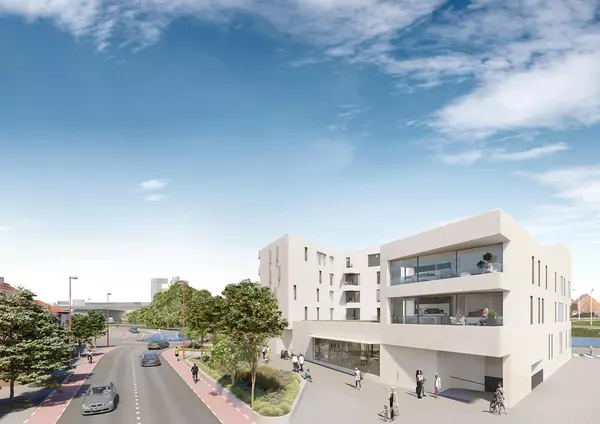CoStar economist details housing risks of extended government shutdown
As the U.S. government hits its seventh shutdown day under President Donald Trump, economists and real estate analysts are watching anxiously for cracks in the housing market.
One week in, there is limited evidence of direct shutdown effects, but many warning signs and structural risks loom.
Carl Gomez, chief economist and head of market analytics at CoStar Group, said the shutdown is already casting a psychological shadow across sectors that rely on federal operations, even if the housing market has not yet shown deep disruption.
“It has not necessarily translated much into the housing market directly yet,” he said. “It’s early days. The rule of thumb that we usually say is, you know, attempt at GDP could be affected by a shutdown, if the shutdown is two weeks or more. That’s the direct economic impact.
“The psychological impacts are another story. It definitely lends itself to some uncertainty for business, consumers and just about anybody who relies on the federal government to provide services.”
On Monday, Trump momentarily suggested he might enter talks with Democrats, but within hours reversed course — declaring that Democrats would need to end the shutdown before any negotiations could take place.
“I am happy to work with the Democrats on their Failed Healthcare Policies, or anything else, but first they must allow our Government to re-open,” Trump said on social media.
Comparisons to past shutdowns
During the 35-day shutdown from December 2018 to January 2019, existing home sales dipped from 5.18 million in November 2018 to 5.01 million in December and 4.97 million in January — before rebounding to 5.31 million once the government reopened, according to Realtor.com.
A study published by the American Land Title Association showed that among closings impacted at that time, 17% cited delays in USDA loan closings, 13% cited delays in IRS income verification and 9% cited other government-induced delays.
In the 2013 shutdown, mortgage application activity dropped — the Mortgage Bankers Association found applications declined 7% in the second week of disruption.
A Zillow analysis from 2018 estimated that about 3,500 federally backed mortgage loans per business day could be delayed in a shutdown scenario.
Technology as a buffer
One critical difference between today and 2018, Gomez said, is the advanced state of real estate technology — helping maintain transaction workflows even during a partial governmental freeze.
“Technology has expanded significantly, and with that the technology provides more efficiencies,” he said. “That can be person-to-person or agent-to-agent communication and transparency information. It’s all coming much easier as technology advances.”
Platforms such as listing aggregators, digital transaction management systems, e-signatures and AI-driven valuation tools allow real estate brokers and agents to maintain much of their front-end work even while federal agencies slow or pause.
“There’s obviously lots of opportunity at Homes.com to be able to get transparency on both listings and sales and housing value,” Gomez said. “That makes the market a lot more efficient today than it was six or seven years ago.”
Economy slows, home sales stagnate
The broader economy is already decelerating — and real estate activity has been sluggish even before the shutdown, Gomez said.
“I think that’s the major issue right now, a situation where there’s deceleration,” he said. “(The economy) is coming from a great place, but there is deceleration and that deceleration is happening in jobs as well.”
“Technology is crowding out some job growth, as well. I think the consumer and homeowners are a little bit more weary at this point.” He notes that weariness comes from an increase in house prices “and the fact that interest rates are higher than they were coming through COVID.”
Gomez also noted that home transaction levels are not bouncing back because the current price and interest rate tradeoffs remain unfavorable.
Meanwhile, supply chain pressures and rising input costs complicate new construction. CoStar reported that construction material costs are surging — and lots for single-family development are reaching record pricing levels.
Furloughed workers’ back pay at risk?
A major risk point relates to the roughly 800,000 federal employees affected by a shutdown and their ability to meet mortgage obligations without paychecks.
The White House has reportedly floated the idea of not compensating furloughed workers with backpay upon the government reopening — or even eliminating some jobs entirely.
Gomez said housing market consequences under those scenarios would be felt quickly.
“People need their paychecks to pay their mortgages. If they don’t have their paychecks, that could cause delinquencies to start to pick up,” he said. “Delinquency rates are still relatively low, but we have seen some delinquency increases modestly in places like (Washington, D.C.)”
Another vulnerability lies in mortgage programs tied to government agencies; FHA, USDA and VA-backed mortgages may see processing delays if federal staff are unavailable.
Additionally, the National Flood Insurance Program (NFIP) typically supports hundreds of closings daily.
The National Association of Realtors estimates that NFIP supports nearly a half-million home sales annually, contributing roughly $70 billion to the U.S. economy.
Global affordability problems — U.S. isn’t alone
Gomez also noted that housing affordability and supply constraints are not unique to the United States.
Canada, for example, has faced steep affordability pressures — prompting its central bank to cut rates aggressively, he added.
“Supply continues to be an issue,” said Gomez. “There’s not enough supply to meet the latent demand that’s there. Costs pass through due to a number of issues in the global economy. Supply chains have pushed the cost of building housing higher, so that continues to contribute to an affordability problem.
“So, from a Canadian perspective, Americans should know that they’re not alone. This is not just an American problem. It’s largely a global problem of affordability and the housing market not building enough supply for the demand that’s been there.”
Categories
Recent Posts










GET MORE INFORMATION

Stevan Stanisic
Real Estate Advisor | License ID: SL3518131
Real Estate Advisor License ID: SL3518131
